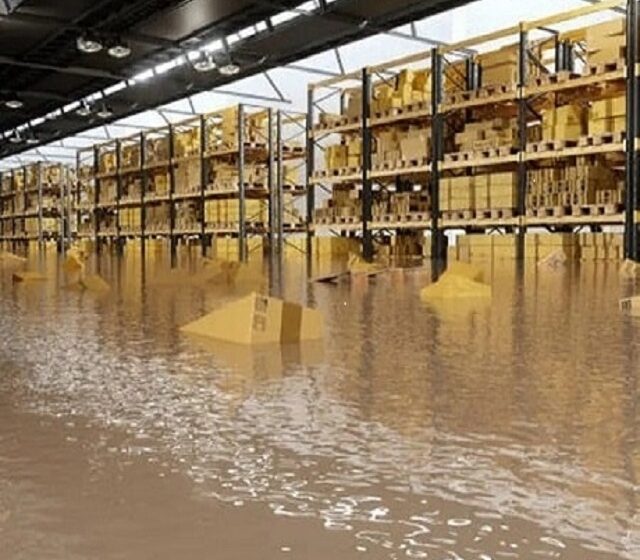Basement flooding is a significant concern for homeowners, as it can cause severe damage to the structure of a house and its contents. Understanding the common causes of a flood in basement areas is the first step in taking preventive measures. If not managed properly, basement flooding can lead to expensive repairs, mold growth, and even a compromised foundation. This article explores the primary causes of basement flooding and how disaster restoration services can help you address these issues.
1. Heavy Rainfall and Storms
One of the most common causes of flooding in basements is heavy rainfall or storms. When rain falls heavily over a short period, the ground surrounding your home may become saturated. The excess water may not be absorbed by the soil quickly enough, which can result in the water pooling around your foundation. As the water accumulates, it can seep through cracks in the foundation or the walls of your basement, leading to a flood in basement areas.
During storms, high winds can also affect the integrity of roofing or windows, allowing rainwater to enter and create pooling in basements. In such cases, the flooding is often exacerbated by inadequate drainage systems or the inability of the property to handle the influx of water.
How Disaster Restoration Services Help
Disaster restoration services can assist in evaluating the extent of storm damage. They can use specialized equipment to assess water intrusion and help prevent long-term damage. Additionally, they can assist in repairing and waterproofing your basement to prevent future flooding.
2. Broken or Clogged Pipes
Another frequent cause of basement flooding is broken or clogged pipes. Plumbing issues, such as a burst pipe or a blocked sewer line, can lead to sudden water leakage in the basement. If a pipe is damaged or becomes blocked, water can overflow and flood the basement area. These issues often arise due to frozen pipes in winter or wear and tear from years of use.
How Disaster Restoration Services Help
In cases of plumbing failure, disaster restoration services can manage the cleanup and assess the damage to your home’s structure. They can also work with plumbers to fix broken pipes or remove any standing water that could lead to mold or other issues.
3. Foundation Cracks and Gaps
The foundation of your home plays a crucial role in keeping the basement dry. However, even the most well-constructed foundations can develop cracks or gaps over time due to settling, soil movement, or natural aging. These cracks can serve as entry points for water, leading to a flood in basement areas after heavy rain or snowmelt.
Even minor cracks in your foundation can cause significant water damage if they are left unchecked. Water can easily seep through these cracks and accumulate in the basement, creating a damp environment that can lead to long-term problems such as mold growth and structural damage.
How Disaster Restoration Services Help
Professional disaster restoration services offer repair and remediation for cracked foundations. They can use sealing techniques to prevent further water intrusion and may recommend additional drainage solutions to improve water flow around the house.
4. Sump Pump Failure
A sump pump is often installed in basements to help prevent flooding by directing water away from the foundation. When these pumps fail, they can no longer perform their critical task of pumping water out of the basement, and as a result, the basement may flood. Sump pump failure can occur for a variety of reasons, including mechanical failure, power outages, or improper installation.
If your sump pump is old, it may not be able to handle the volume of water from heavy rain or storms, leading to a flooded basement. Regular maintenance of the sump pump system is essential to ensure that it is functioning properly.
How Disaster Restoration Services Help
Disaster restoration professionals can help mitigate the damage caused by a sump pump failure. They will remove any standing water, assess the overall damage, and recommend any necessary repairs to your sump pump system to prevent future flooding.
5. Poor Drainage Systems
A poor drainage system is another common cause of basement flooding. Gutters and downspouts are essential for directing water away from the home’s foundation. If the gutters are clogged or downspouts are not directed far enough away from the house, water can pool around the foundation and seep into the basement.
Inadequate grading around the foundation of your home can also contribute to basement flooding. If the ground slopes toward the house rather than away from it, water will naturally flow toward the basement, increasing the risk of flooding.
How Disaster Restoration Services Help
Disaster restoration services can identify poor drainage issues and provide solutions to redirect water away from your home. They may install proper grading or repair damaged gutters and downspouts to ensure the flow of water does not compromise your basement.
6. Sewage Backup
Sewage backups are another potential cause of flooding in basements. If the sewer system becomes overwhelmed due to heavy rainfall, blocked pipes, or a malfunction in the city’s sewage system, wastewater can flow back into your home’s basement through drains or toilets. This type of flooding not only causes water damage but can also introduce harmful bacteria and pathogens into the home.
Sewage backups can be hazardous to your health and can cause extensive damage to the structure and belongings in your basement. Immediate action is necessary to remove the contaminated water and properly disinfect the affected areas.
How Disaster Restoration Services Help
Disaster restoration services specializing in sewage cleanup can remove contaminated water safely and efficiently. They will also disinfect the affected area to ensure that harmful bacteria do not pose a threat to your health and that mold growth is minimized.
7. Clogged or Blocked Drains
Blockages in floor drains or other drains in the basement can cause water to back up into the basement. Over time, debris such as leaves, dirt, or even grease can accumulate in the pipes, restricting the flow of water. When the water has nowhere to go, it can overflow and flood your basement. Blockages are often found in older homes with outdated plumbing systems or in areas prone to heavy rainfall.
How Disaster Restoration Services Help
If your basement flooding is caused by a clogged or blocked drain, disaster restoration experts can assist in clearing the blockage and managing any resulting water damage. They may also recommend upgrading your plumbing system to prevent future issues.
Conclusion
Basement flooding can be caused by various factors, including heavy rainfall, plumbing issues, foundation cracks, sump pump failure, poor drainage, and sewage backups. Each of these causes requires prompt attention and proper remediation to prevent long-term damage. Disaster restoration services play a crucial role in helping homeowners address the damage caused by basement flooding. They offer expertise in water removal, damage assessment, and repair, ensuring that your basement is restored to its original condition and protected from future floods. Whether you are dealing with minor leaks or severe flooding, professional help is essential to safeguard your home and its foundation from the devastating effects of water damage.



